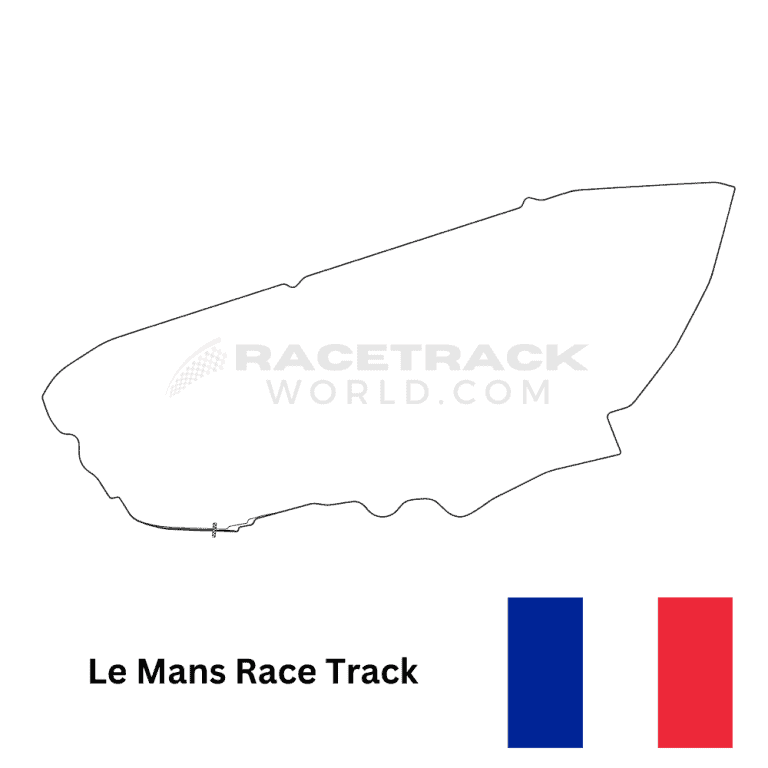Circuit 24 Hours of Le Mans Info

Hotels near Circuit 24 Hours of Le Mans
Circuit 24 Hours of Le Mans History
If you're a motorsport enthusiast, there's no place quite like the Circuit de la Sarthe, commonly known as Le Mans, for experiencing the heart-pounding excitement of endurance racing. Located in the picturesque city of Le Mans, France, this iconic circuit is renowned for hosting the annual 24 Hours of Le Mans, a race that has rightfully earned its place as one of the most prestigious events in motorsport. In this guide, we'll delve deeper into the fascinating world of this legendary track and introduce you to the best hotels in close proximity to the circuit, ensuring you have a comfortable stay while immersing yourself in the thrill of racing.
Circuit Overview
Stretching an impressive 13.626 kilometers in length, the Circuit de la Sarthe is a captivating blend of fast straights, challenging corners, and varying elevations. Its history is rich, with numerous layout changes, but the current design, largely unaltered since 1972, still provides the ultimate challenge for racers and an unforgettable spectacle for spectators.
Track Sections
Circuit de la Sarthe
The heart of the Le Mans circuit is the Circuit de la Sarthe, spanning 13.629 kilometers. It combines sections of public roads with purpose-built racetracks, offering a unique blend of challenges and excitement. The most famous features of this section include the awe-inspiring Mulsanne straight, an astonishing 6 kilometers long, and the high-speed Porsche Curves, where cars reach speeds exceeding 350 km/h. The Mulsanne straight is a true spectacle, showcasing some of the fastest cars in the world as they push their limits.
Bugatti Circuit
A shorter, purpose-built section measuring 4.185 kilometers, the Bugatti Circuit is mainly used for smaller events and testing. During the 24 Hours of Le Mans race, it serves as the pit and paddock area. It features a mix of high-speed and technical corners, including the Dunlop Esses and a chicane at the end of the straight.
One of the circuit's most iconic corners, the Dunlop Esses, is a sequence of fast, sweeping corners that demand precision and skill to navigate. The Dunlop Esses lead into the Tertre Rouge corner, a slow bend that requires drivers to brake heavily before they can accelerate onto the Mulsanne straight. The Porsche Curves are another demanding section of the track, with a series of tight, high-speed corners that necessitate precision and unwavering concentration.
History and Prestige
The Le Mans circuit has a storied history dating back to 1923, when the first 24 Hours of Le Mans race was held. This event has since grown into one of the most prestigious motorsport competitions, attracting the best drivers and teams from across the globe. Its unique format requires teams to race for a grueling 24 hours straight, with drivers taking turns behind the wheel.
Held annually in June, the 24 Hours of Le Mans draws over 250,000 spectators to the circuit. The race is divided into several classes, including prototypes, GT cars, and touring cars, each with their own set of regulations. It is a true test of endurance, with drivers and teams not only battling each other but also contending with the circuit's harsh conditions, which include extreme temperatures, rain, and the cover of darkness.
Modifications and Safety
Over the years, the Le Mans circuit has undergone several modifications to enhance safety and meet the evolving requirements of motorsport. The most recent alteration in 2018 extended the track by 150 meters at the end of the Porsche Curves, aimed at improving safety by reducing car speeds before they enter the pit lane.
Other Racing Events
Beyond the iconic race, the circuit also hosts other major racing events, including the World Endurance Championship, the European Le Mans Series, and the Le Mans Classic. The Le Mans Classic is a biennial event that showcases historic racing cars from the 1920s to the 1970s, making it a must-visit for motorsport enthusiasts and vintage car collectors.
Now, to ensure your visit to Circuit de la Sarthe is memorable and comfortable, here's a list of hotels located in close proximity to the circuit:
-
Hotel Le Mans – Situated just a stone's throw away from the circuit, Hotel Le Mans offers comfortable accommodations with easy access to the racing action.
-
Le Mans Motorsport Hotel – This hotel caters specifically to motorsport fans, making it an ideal choice for your stay during race events.
-
Circuit View Hotel – Enjoy the spectacular view of the circuit from this conveniently located hotel, which offers a great vantage point to witness the races.
-
Grand Prix Plaza Hotel – Offering a blend of luxury and convenience, this hotel is perfect for those seeking a more upscale experience.
Your visit to the Circuit de la Sarthe is sure to be an unforgettable experience, both on and off the track. Book your stay at one of these hotels, and immerse yourself in the thrilling world of motorsport at Le Mans.
